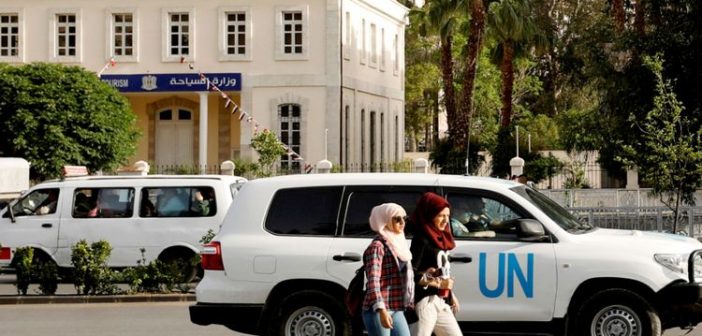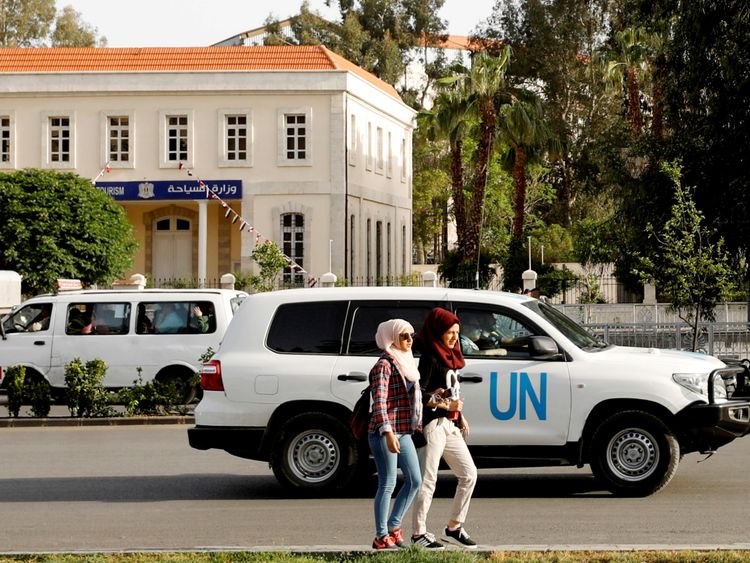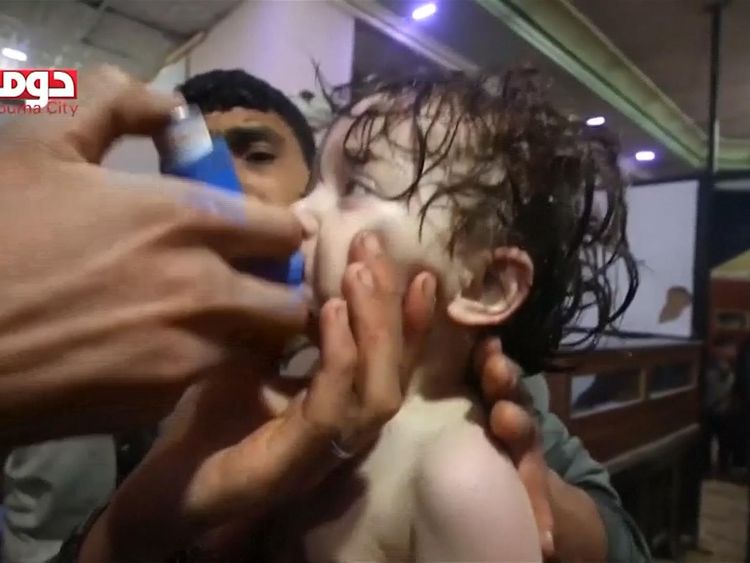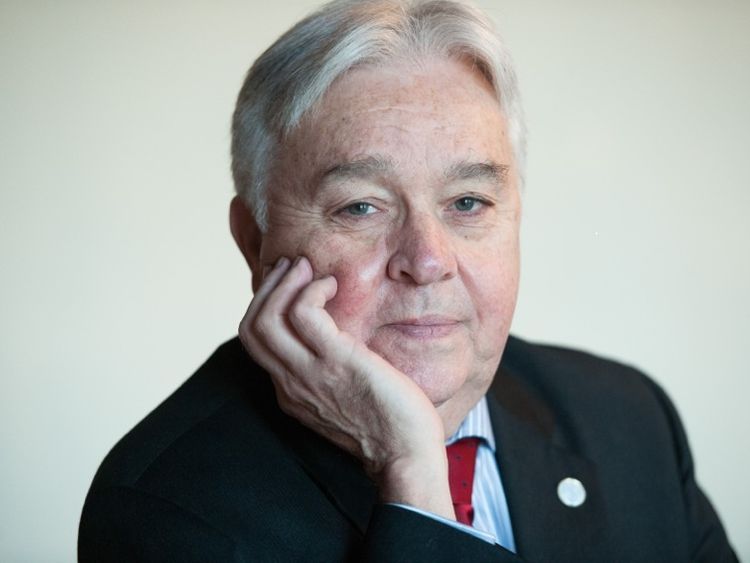Chemical weapons inspectors are today being allowed into Syria’s Douma, the site of a suspected chemical attack. Their job is to investigate what happened at the site. But what does that actually involve?
Expert Paul F Walker, who took part in a historic chemical weapons inspection in Russia in 1994 and campaigned against arms for more than three decades, explains some of the details of an investigation.
Due to the ongoing war in Syria, any chemical weapons inspection there, either for removal or destruction of its stockpiles, or for chemical weapons use allegations, requires heightened security.
OPCW (Organisation for the Prohibition of Chemical Weapons) inspectors are fitted with bullet-proof vests and face possible life-threatening opposition.
In fact, inspectors have now experienced both having shots fired at them and roadside bombs, which destroyed one of their vehicles.
The current inspections in Douma will be looking for any evidence of chemical weapons, including the agents themselves as well as the remains of any munitions, including barrel bombs.
But in an active war zone, this can be difficult, and may be compromised by ongoing combat and/or efforts by the warring parties to hide evidence; even poor weather, such as heavy rain, can wash away some evidence.
The Fact-Finding Mission (FFM) team of nine OPCW inspectors arrived in Damascus on 14 April, but was prevented from travelling immediately to Douma due to “pending security issues” raised by the Syrian and Russian governments, now reportedly in control of the area captured from rebel forces.
With over a week having elapsed since the suspected attack, forensic evidence of chlorine, which evaporates very quickly, may be difficult to find, but nerve agents tend to be much more persistent and could likely be obtained.
In addition to on-site munition-related evidence, inspectors also try to interview any victims, medical personnel and eyewitnesses to any alleged attack, in order to compare their accounts, and also seek to obtain blood and urine samples of both the dead and injured victims.
All forensic and medical samples are brought back to the OPCW under full chain of custody, thus preventing any tampering with evidence, and shared with at least two OPCW-accredited laboratories for comparative analysis.
When analysed with intelligence information concerning flight patterns of aircraft and helicopters in the area and other possible attack scenarios, this may allow the FFM inspectors to piece together a credible account of what actually happened on 7 April, whether chemical agents were involved, and which agents were used.
The inspectors are not mandated to seek accountability in these Syrian investigations, that is, to determine who may have undertaken such illegal attacks.
But the FFM reports, of which there have been a dozen or more to date, have been turned over to the United Nations Joint Investigative Mechanism (JIM), established by the UN Security Council in 2015 but unfortunately allowed to lapse last October due to a Russian veto of its extension.
Past JIM reports have found the Syrian government responsible for two sarin nerve agent and two chlorine attacks between 2014 and 2017; the UN reports have also found Islamic State responsible for two mustard agent attacks in 2015 and 2016.
The international Chemical Weapons Convention (CWC) entered into force in 1997 banning the use of any chemical weapons in warfare, and requiring the verified and safe destruction of all existing chemical weapons stockpiles.
It is currently the most universal arms control treaty in existence, with 192 of 196 countries as members, and the OPCW, its international implementing agency in The Hague, has about 450 full-time staff.
The OPCW maintains an international inspectorate which regularly inspects all stockpile destruction efforts, currently still ongoing in the United States, and undertakes 241 annual inspections of chemical industry.
Since 1997, OPCW inspectors have verified the safe and irreversible elimination of more than 69,000 metric tons of deadly chemical agents in eight countries, representing more than 96% of declared chemical weapons arsenals.
OPCW inspectors have to date compiled an excellent and massive record of on-site inspections – 6,785 inspections at weapons-related and industry sites in 86 countries.
However, when Syria, under pressure from Russia, the US, and other CWC-member states, acceded to the CWC in 2013, it presented a new challenge.
In this latest suspected chemical attack, reports indicate dozens of citizens killed and hundreds injured – possibly by chlorine gas and sarin nerve agent, already known to have been used by Syrian government forces in at least four previous attacks between 2014 and 2017.
If this report by victims and medical personnel is found to be accurate, it will represent just one of hundreds of such reports since 2012 in the long and costly war in Syria.
Past reports of the OPCW FFM, as well as national statements, can be found on the OPCW website. UN reports can be found on the UN website.
Paul F Walker, PhD, is the international program director of Green Cross International and vice chair of the Arms Control Association Board. He participated in one of the first US on-site inspections of a Russian chemical weapons stockpile in 1994 and has worked closely with the OPCW as an NGO representative over the past 15 years. His work has helped to eliminate more than 55,000 metric tons of chemical weapons.
From – SkyNews






